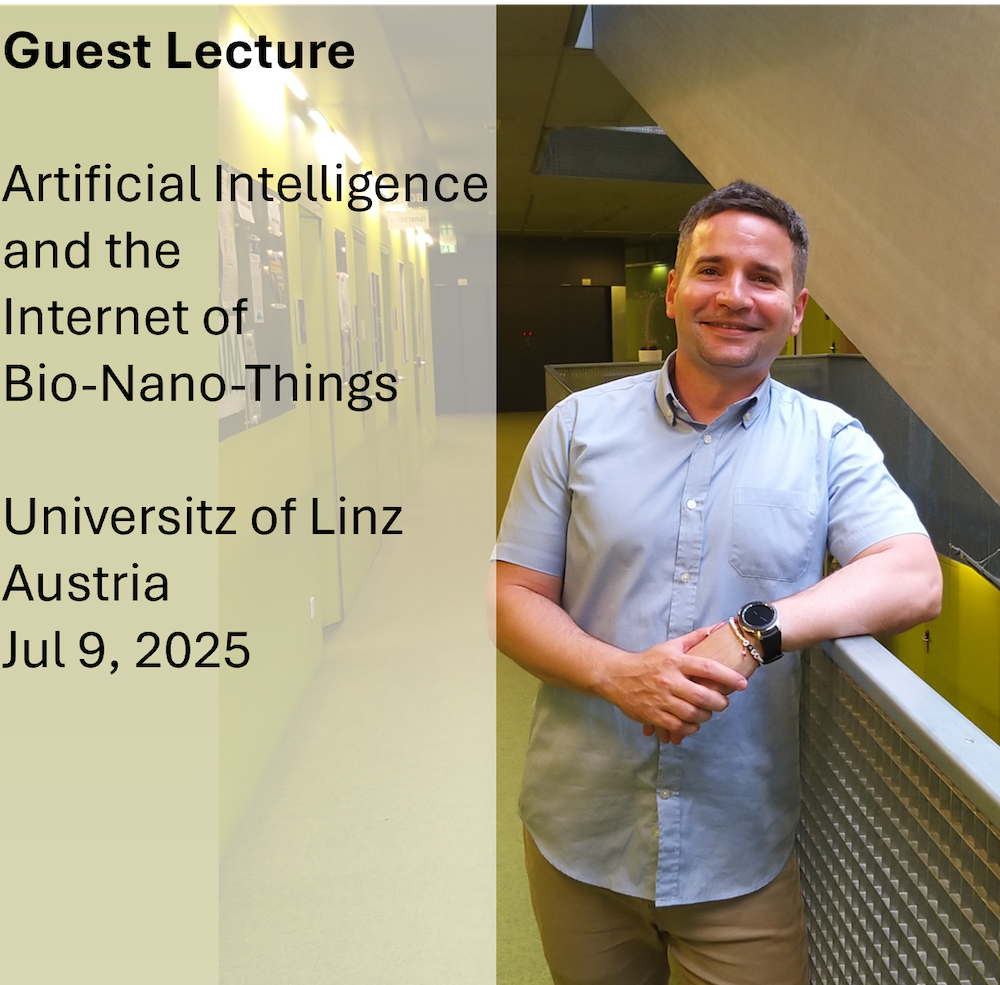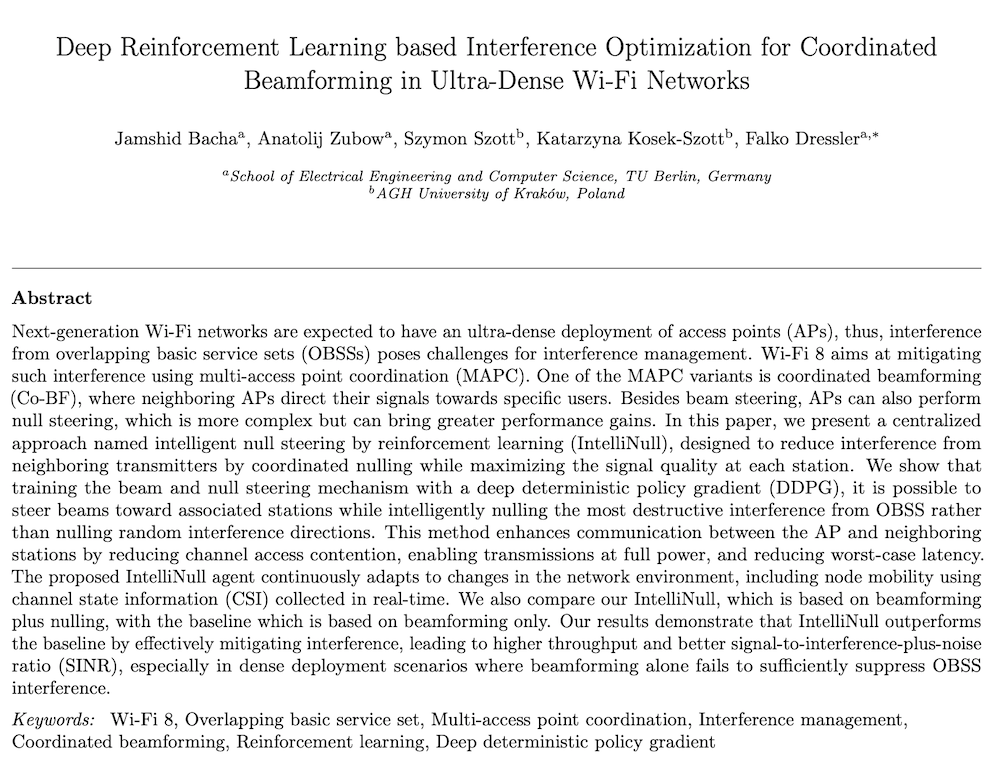Literature Database Entry
wang2022monisys
Weijun Wang, "MoniSys: Sensing, Communication, and Video Analysis in UAV Monitoring System," PhD Thesis, Faculty of Mathematics and Computer Science, Georg-August-University of Goettingen, September 2022. (Advisors: Xiaoming Fu and Guihai Chen; Referees: Xiaoming Fu, Falko Dressler and Robert Schober)
Abstract
Over the past 20 years, visual data has taken over every aspect of our lives, and camera deployment has experienced an unprecedented increase. For example, in the USA and UK, there is one camera for every 8 people used for diverse applications, like surveillance and public safety. However, in many extreme conditions, pre-deploying cameras are not feasible. Fortunately, the development of UAVs let these agile, flexible, and powerful devices make up the limitation of pre-deployed cameras. While high-resolution visual data offers rich information about the sensing environment, it causes significant challenges to the data analysis. Advances in computer vision present an excellent opportunity to process and analyze this massive amount of data; however, they have come at the expense of compute and network costs. For analysis, computing-resource-limited UAVs need to transmit sensing data to a computing-resource-rich server (on the ground). This distributed architecture posits several network-level resource management challenges: to ensure optimal UAV trajectories for sensing visual data; and to address the mobility impact and fair data delivery in multi-UAV access networks; and to provide low-latency, high-accuracy, and low-bandwidth-cost analysis. We begin by presenting a general algorithm design schema for the waypoint planning problem to generate waypoints (i.e., UAVs hovering and sensing points) achieving quality bounded sensing data. This schema includes three steps: discretization divides the entire solution space into subspaces; then dominating set extraction find out all the optimal solutions in every subspace; at last, transform waypoint planning into submodular optimization problem and propose an approximate algorithm. We apply this schema to three scenarios and verify the performance of our method provides 1.6× gain in sensing data quality. Next, in order to address communication challenges, specifically the mobility impact and fairness among multiple UAV-server streamings, we develop VSiM - an easy-deployment and high-compatibility end-to-end solution to fairness in multiple mobile video streaming applications with a shared bottleneck bandwidth. It is pluggable to the server directly without caring and modifying any existing protocols or components. VSiM consists of three key techniques: dynamic and fair bandwidth allocation by incorporating mobile profile and QoE-related information; quick buffer filling for clients with lower playback time according to the requirement of the buffer-sensitive clients; adaptiveness to heterogeneous wireless network environments, like varied mobility patterns and topologies of base stations (BSes). It improves more than 40% on min QoE, which equals resolution improvement of viewing quality from 720p to 1080p) compared to state-of-the-art solutions. Finally, in order to achieve low-latency, high-accuracy, and low-bandwidth-cost analysis, we present AccDecoder - a new decoder that derives important video content from bits stream and enhances them by super-resolution (SR) model. SR model achieves low-bandwidth-cost by allowing UAVs to transmit low-resolution data and enhance them into high-resolution getting high-accuracy. AccDecoder performs low-latency by analyzing bits stream in compressed-video-space, then selecting and enhancing a small part of data. AccDecoder preliminary opens the original decoder and reveals handy video codec information has potential room to accelerate analysis more than 4× speed. This dissertation combines abstract mathematical models to describe and derive UAV Monitoring System (MoniSys) behaviors to design theory-level algorithms and develop system-level implementations for a set of working. The proposed key solutions have been implemented on DASH, PyTorch, H.264, and QUIC, four open-source codes, and our code is also public released on GitHub.
Quick access
Contact
Weijun Wang
BibTeX reference
@phdthesis{wang2022monisys,
author = {Wang, Weijun},
title = {{MoniSys: Sensing, Communication, and Video Analysis in UAV Monitoring System}},
advisor = {Fu, Xiaoming and Chen, Guihai},
institution = {Faculty of Mathematics and Computer Science},
location = {G{\"{o}}ttingen, Germany},
month = {9},
referee = {Fu, Xiaoming and Dressler, Falko and Schober, Robert},
school = {Georg-August-University of Goettingen},
type = {PhD Thesis},
year = {2022},
}
Copyright notice
Links to final or draft versions of papers are presented here to ensure timely dissemination of scholarly and technical work. Copyright and all rights therein are retained by authors or by other copyright holders. All persons copying this information are expected to adhere to the terms and constraints invoked by each author's copyright. In most cases, these works may not be reposted or distributed for commercial purposes without the explicit permission of the copyright holder.
The following applies to all papers listed above that have IEEE copyrights: Personal use of this material is permitted. However, permission to reprint/republish this material for advertising or promotional purposes or for creating new collective works for resale or redistribution to servers or lists, or to reuse any copyrighted component of this work in other works must be obtained from the IEEE.
The following applies to all papers listed above that are in submission to IEEE conference/workshop proceedings or journals: This work has been submitted to the IEEE for possible publication. Copyright may be transferred without notice, after which this version may no longer be accessible.
The following applies to all papers listed above that have ACM copyrights: ACM COPYRIGHT NOTICE. Permission to make digital or hard copies of part or all of this work for personal or classroom use is granted without fee provided that copies are not made or distributed for profit or commercial advantage and that copies bear this notice and the full citation on the first page. Copyrights for components of this work owned by others than ACM must be honored. Abstracting with credit is permitted. To copy otherwise, to republish, to post on servers, or to redistribute to lists, requires prior specific permission and/or a fee. Request permissions from Publications Dept., ACM, Inc., fax +1 (212) 869-0481, or permissions@acm.org.
The following applies to all SpringerLink papers listed above that have Springer Science+Business Media copyrights: The original publication is available at www.springerlink.com.
This page was automatically generated using BibDB and bib2web.





